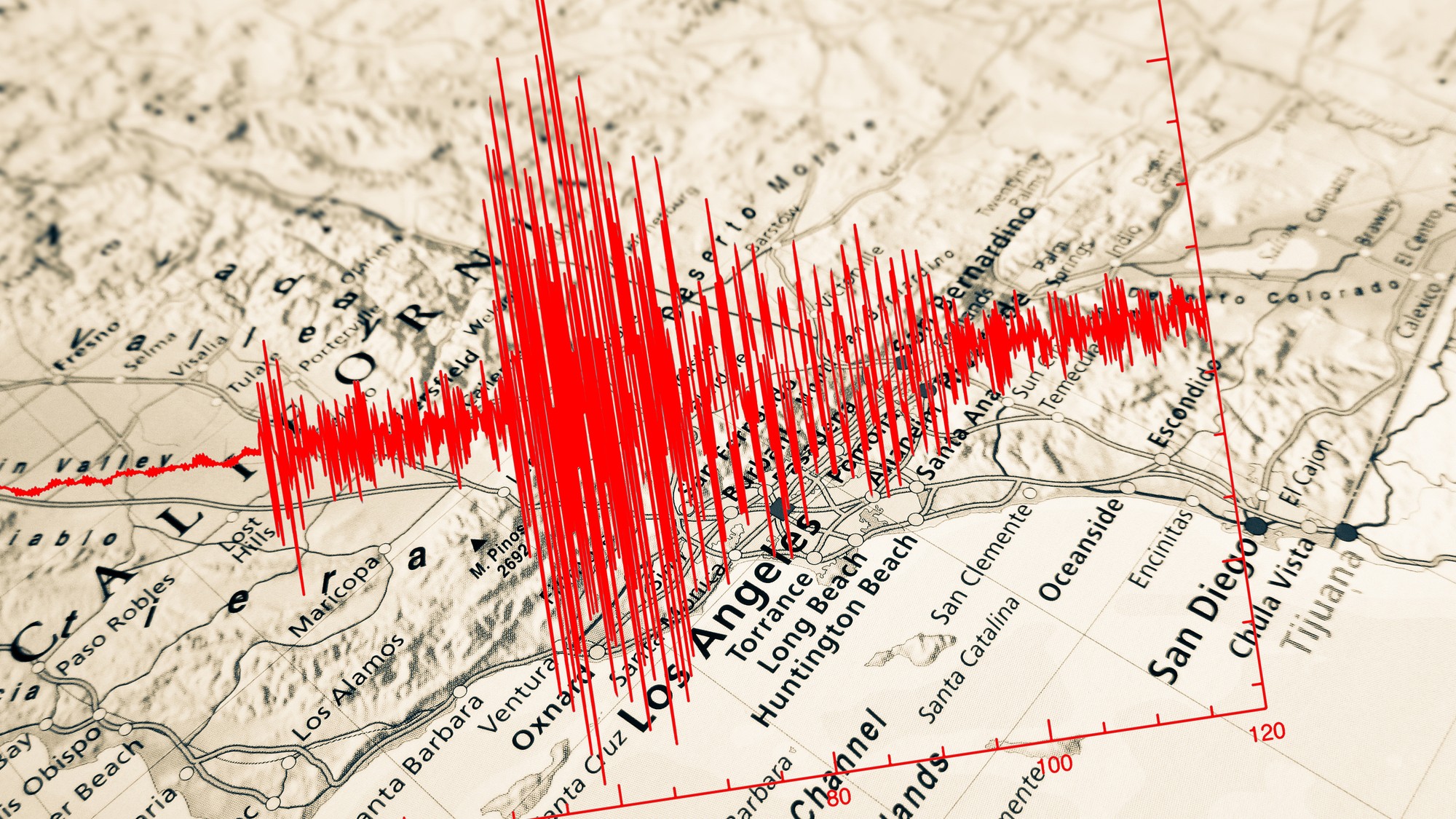The lesser-known Elsinore fault is a risk to California
A powerful earthquake could be on the horizon


The magnitude 5.2 earthquake that shook most of Southern California on Monday did not result in any reported injuries or damage. But the stronger-than-expected tremor has brought into focus its source, the somewhat obscure but dangerous Elsinore fault.
What's the Elsinore fault?
California has long been a hotbed of seismic activity, with the notorious San Andreas being the largest fault. However, the state has several other fault lines that can perpetuate earthquakes. The April 14 earthquake that occurred along the Elsinore fault is part of a larger fault zone. The Elsinore is "one of the largest in southern California and in historical times has been one of the quietest," said the Southern California Earthquake Data Center (SCEDC). But quiet does not mean harmless.
The Elsinore runs 190 miles long and "extends from near the U.S.-Mexico border through San Diego County to the northern end of the Santa Ana mountains near Los Angeles," said The San Diego Union-Tribune. The northern part of the fault zone divides into two segments, the Chino fault and the Whittier fault.
The Week
Escape your echo chamber. Get the facts behind the news, plus analysis from multiple perspectives.

Sign up for The Week's Free Newsletters
From our morning news briefing to a weekly Good News Newsletter, get the best of The Week delivered directly to your inbox.
From our morning news briefing to a weekly Good News Newsletter, get the best of The Week delivered directly to your inbox.
The last earthquake along the fault greater than 5.2 was a magnitude 6 earthquake in 1910, according to the SCEDC. That makes the recent event the largest along the fault in over 100 years.
This quake was "considered a minor earthquake," said Mark Benthien, the associate director of public education and preparedness at the Statewide California Earthquake Center, to East County Magazine. However, there was higher reported shaking than would be expected of a quake of this magnitude. "Why we had such widely felt shaking reports for such a moderate size earthquake" will be a topic of future research, said Alice Gabriel, a seismologist at the UCSD Scripps Institution of Oceanography, to Fox 5 San Diego.
What are the dangers?
Despite the recent minor earthquake, the Elsinore has the potential to create much stronger quakes. The Elsinore fault is "one of the major risks in Southern California," Lucy Jones, a seismologist and Caltech research associate, said to the Los Angeles Times. It's capable of producing up to a magnitude 7.8 earthquake, which is approximately 200 times larger than this week's quake.
The estimated time between major ruptures (magnitude 6.5 to 7.5) along the fault zone is roughly between 250 and 600 years. "We think the last major rupture along the fault was in the 1700s," said Benthien. "So we are over that time period." There's potential for the April 14 earthquake to be a precursor to a larger earthquake, but it's also possible that nothing could happen "for a long time."
A free daily email with the biggest news stories of the day – and the best features from TheWeek.com
A particularly "frightening and plausible prospect" would be an earthquake that moves up the Elsinore fault onto the Whittier fault, which would "pour all the energy straight into the L.A. Basin. It's one of the scary earthquakes," said Jones.
And the Elsinore fault is not the only risk to Southern California. It can "be thought of as a sibling of the San Andreas, along with the sizable San Jacinto fault," said the Los Angeles Times. The three faults "all move at relatively fast rates on average, meaning each is, generally speaking, more likely to rupture during the span of a human lifetime."
Devika Rao has worked as a staff writer at The Week since 2022, covering science, the environment, climate and business. She previously worked as a policy associate for a nonprofit organization advocating for environmental action from a business perspective.
-
 What would a UK deployment to Ukraine look like?
What would a UK deployment to Ukraine look like?Today's Big Question Security agreement commits British and French forces in event of ceasefire
-
 Nicolás Maduro: from bus driver to Venezuela’s president
Nicolás Maduro: from bus driver to Venezuela’s presidentIn the Spotlight Shock capture by US special forces comes after Maduro’s 12-year rule proved that ‘underestimating him was a mistake’
-
 Artemis II: back to the Moon
Artemis II: back to the MoonThe Explainer Four astronauts will soon be blasting off into deep space – the first to do so in half a century
-
 How climate change is affecting Christmas
How climate change is affecting ChristmasThe Explainer There may be a slim chance of future white Christmases
-
 Africa could become the next frontier for space programs
Africa could become the next frontier for space programsThe Explainer China and the US are both working on space applications for Africa
-
 NASA is moving away from tracking climate change
NASA is moving away from tracking climate changeThe Explainer Climate missions could be going dark
-
 A rat infestation is spelling trouble for the almond industry
A rat infestation is spelling trouble for the almond industryThe Explainer The infestation has affected at least 100,000 acres in California
-
 What would happen to Earth if humans went extinct?
What would happen to Earth if humans went extinct?The Explainer Human extinction could potentially give rise to new species and climates
-
 A zombie volcano is coming back to life, but there is no need to worry just yet
A zombie volcano is coming back to life, but there is no need to worry just yetUnder the radar Uturuncu's seismic activity is the result of a hydrothermal system
-
 How to see the Lyrid meteor shower
How to see the Lyrid meteor showerThe explainer A nice time to look to the skies
-
 The dubious nature of de-extinction
The dubious nature of de-extinctionThe Explainer Is it a vanity project backed by billions, or the future of animal conservation?
